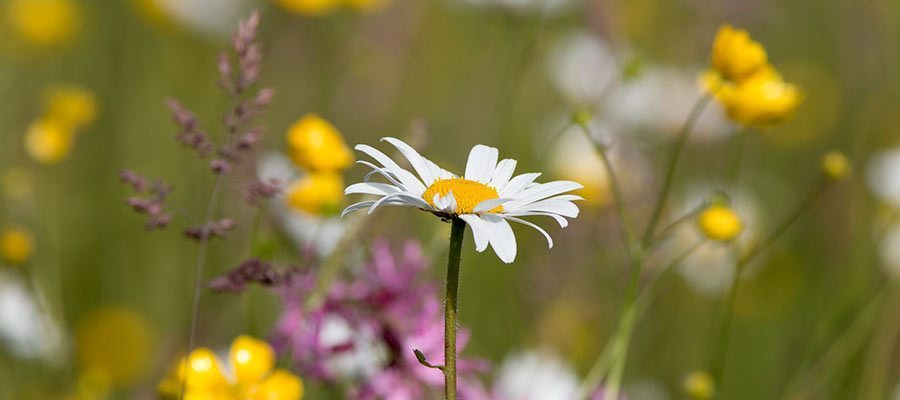Printed from: https://finalhbks.asgoodasready.com/the-urban-handbook/grasslands/
Allowing grasslands and other open land in urban areas to support a variety of native and naturalised grasses and flowering plants has the following advantages.
- The variety of plants will attract butterflies, bees, birds and other types of wildlife.
- Flowering plants bring colour and the changing seasons to urban areas, whereas regularly mown grassland changes little in appearance over the year.
- Assemblages of native and naturalised plants are good educational resources for study and inspiration, from botany and ecology through to art and design.
- Community involvement in management is possible, especially on smaller sites which are managed as a ‘mosaic’ of different types of habitat.
- Conversely, large areas of wildflower grassland and other open areas can be created and managed with the help of agricultural machinery, with costs usually much lower than for conventionally managed short grassland.
Even small areas of wild flowers or tall grasses can bring a feeling of ‘countryside’ or ‘wilderness’ into the town. Many derelict sites with greatly altered substrates have naturally developed into exciting habitats with mixtures of native and naturalised plants that create unique landscapes. Addition of extra plant species may not be necessary. Other sites will need help in the form of substrate alteration, sowing of suitable seeds, and cutting or mowing, in order to develop an ecologically interesting and attractive habitat.
Nearly all open areas of grasses, herbaceous flowering plants and low shrubs require management of some sort. Without mowing, grazing, or periodic disturbance, all such sites will develop scrub and woodland growth. Management of the remaining ‘rural’ grassland and heathland within urban areas presents particular problems and challenges.

